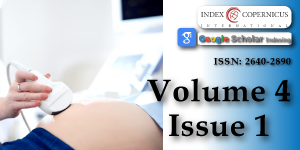Epidemiologic aspects and risk factors associated with infertility in women undergoing assisted reproductive technology (ART) in north of Iran
Main Article Content
Abstract
Objective: This study aimed to investigating of the epidemiological aspects of infertility and related risk factors in infertile women.
Materials and methods: This cross-sectional study, carried out on 330 infertile women referred to two infertility treatment center of Imam Khomeini Hospital and Mother center in Sari, Iran, from April 2015 to March 2017.
Results: 54.5% of these women were in the age of 30-39 years, infertility duration in 55.2% was 1-5 years, Body mass index (BMI) in 44.5% of samples was 26-30 kg/m2, 54.5% had diploma and associate degree. 63.6% lived in urban areas. 74.5 % of patients reported primary infertility. History of polycystic ovarian syndrome (PCOs) and pelvic inflammatory disease (PID) and poor ovarian reserve were the most common causes and risk factors for the infertility with prevalence 19.42%, 16.81% and 13.91%, respectively. Most underlying disease was thyroid disorders (54.5%). There was found statistically significant relationship between residents of urban areas and infertility duration, endometriosis and educational levels, miscarriage with thyroid. Data analysis performed using IBM SPSS 21 software and Chi-Square test (p < 0.05).
Conclusion: The results showed that women with infertility in north of Iran were more likely to be older, less educated, and also had overweight. They are more possible to have ovarian disorders. In these area, thyroid disease more common like Iodine deficient regions. Future research should be focused on the reasons why majority of women don’t seek treatment for the underline significant diseases that may be effects on ovarian function and fertility.
Article Details
Copyright (c) 2021 Zamaniyan M, et al.

This work is licensed under a Creative Commons Attribution 4.0 International License.
Boivin J, Bunting L, Collins JA, Nygren KG. International estimates of infertility prevalence and treatment-seeking: potential need and demand for infertility medical care. Hum Reprod. 2007; 22: 1506-1512. PubMed: https://pubmed.ncbi.nlm.nih.gov/17376819/
Zhou Z, Zheng D, Wu H, Li R, Xu S, et al. Epidemiology of infertility in China: a population‐based study. BJOG. 2018; 125: 432-441. PubMed: https://pubmed.ncbi.nlm.nih.gov/29030908/
Tao X, Ge SQ, Chen L, Cai LS, Hwang MF, et al. Relationships between female infertility and female genital infections and pelvic inflammatory disease: a population-based nested controlled study. Clinics. 2018; 73: e364. PubMed: https://pubmed.ncbi.nlm.nih.gov/30110069/
Den Heijer CD, Hoebe CJ, Driessen JH, Wolffs P, Van Den Broek IV, et al. Chlamydia trachomatis and the risk of pelvic inflammatory disease, ectopic pregnancy, and female infertility: a retrospective cohort study among primary care patients. Clini Infect Dis. 2019; 69: 1517-1525. PubMed: https://pubmed.ncbi.nlm.nih.gov/31504315/
Silvestris E, de Pergola G, Rosania R, Loverro G. Obesity as disruptor of the female fertility. Reprod Biol Endocrinol. 2018; 16: 22. PubMed: https://pubmed.ncbi.nlm.nih.gov/29523133/
Deyhoul N, Mohamaddoost T, Hosseini M. Infertility-related risk factors: a systematic review. Int J Women's Health Reprod Sci. 2017; 5: 24-29.
Correia S, Rodrigues T, Barros H. Socioeconomic variations in female fertility impairment: a study in a cohort of Portuguese mothers. BMJ open. 2014; 4: e003985. PubMed: https://pubmed.ncbi.nlm.nih.gov/24384900/
Shreffler KM, Greil AL, McQuillan J. Responding to infertility: Lessons from a growing body of research and suggested guidelines for practice. Family relations. 2017; 66: 644-658. PubMed: https://www.ncbi.nlm.nih.gov/pmc/articles/PMC5798475/
Kelly-Weeder S, Cox CL. The impact of lifestyle risk factors on female infertility. Women & Health. 2007;44: 1-23. PubMed: https://pubmed.ncbi.nlm.nih.gov/17456461/
Dembińska AA. Psychological determinants of life satisfaction in women undergoing infertility treatment. Health Psychol Report. 2016; 4: 146-158.
Mol BW, Tjon-Kon-Fat R, Kamphuis E, van Wely M. Unexplained infertility: Is it over-diagnosed and over-treated? Best Pract Res Clin Obstet Gynaecol. 2018; 53: 20-29. PubMed: https://pubmed.ncbi.nlm.nih.gov/30518485/
Wischmann TH. Psychogenic infertility—myths and facts. J Assist Reprod Genet. 2003; 20: 485-494. PubMed: https://www.ncbi.nlm.nih.gov/pmc/articles/PMC3455307/
Karimpour Malekshah A, Esmailnejad Moghaddam A, Moslemizadeh N, Peivandi S, Barzegarnejad A, et al. Infertility in Mazandaran province - north of Iran: an etiological study. Iran J Reprod Med. 2011; 9: 21-24. PubMed: https://www.ncbi.nlm.nih.gov/pmc/articles/PMC4212141/
Ghi T, Casadio P, Kuleva M, Perrone AM, Savelli L, et al. Accuracy of three-dimensional ultrasound in diagnosis and classification of congenital uterine anomalies. Fertil Steril. 2009; 92: 808-813. PubMed: https://pubmed.ncbi.nlm.nih.gov/18692833/
Murray CJ, Callender CS, Kulikoff XR, Srinivasan V, Abate D, et al. Population and fertility by age and sex for 195 countries and territories, 1950–2017: a systematic analysis for the Global Burden of Disease Study 2017. Lancet. 2018; 392: 1995-2051. PubMed: https://pubmed.ncbi.nlm.nih.gov/30496106/
Kamali M, Kashfi F, Baghestani A, Kashani H, Tavajohi S, et al. The epidemiologic survey on causes of infertility in patients referred to Royan Institute. Med J Tabriz Univer Med Sci Health Servi. 2011; 28: 103-105.
Ikechebelu J, Adinma J, Orie E, Ikegwuonu S. High prevalence of male infertility in southeastern Nigeria. J Obstetr Gynaecol. 2003; 23: 657-659. PubMed: https://pubmed.ncbi.nlm.nih.gov/14617473/
Moridi A, Roozbeh N, Yaghoobi H, Soltani S, Dashti S, et al. Etiology and Risk Factors Associated with Infertility. Int J Women ̕s Health Reprod Sci. 2019; 7: 346-353.
Polis CB, Cox CM, Tunçalp Ö, McLain AC, Thoma ME. Estimating infertility prevalence in low-to-middle-income countries: an application of a current duration approach to Demographic and Health Survey data. Hum Reprod. 2017; 32: 1064-1074. PubMed: https://pubmed.ncbi.nlm.nih.gov/28204493/
Haydardedeoglu B, Zeyneloglu HB. The impact of endometriosis on fertility. Womens Health. 2015; 11: 619-623. PubMed: https://pubmed.ncbi.nlm.nih.gov/26448139/
Gmyrek GB, Sieradzka U, Goluda M, Gabryś M, Sozański R, et al. Flow cytometric evaluation of intracellular cytokine synthesis in peripheral mononuclear cells of women with endometriosis. Immunol Invest. 2008; 37: 43-61. PubMed: https://pubmed.ncbi.nlm.nih.gov/18214799/
Tanbo T, Fedorcsak P. Endometriosis‐associated infertility: aspects of pathophysiological mechanisms and treatment options. Acta Obstet Gynecol Scand. 2017; 96: 659-667. PubMed: https://pubmed.ncbi.nlm.nih.gov/27998009/
Javadi M. Study of the status of smoking, receiving caffeine and mass index of infertile and healthy 25-25 years old women. 2017; 20: 10-7.
Mohebbi SF, Mohammadzadeh KA. Systematic review of the etiology of the infertility on Iranian domestic published articles between 1999 and 2013. Med Sci J Islam Azad Univer. 2016; 15: 1-5.

